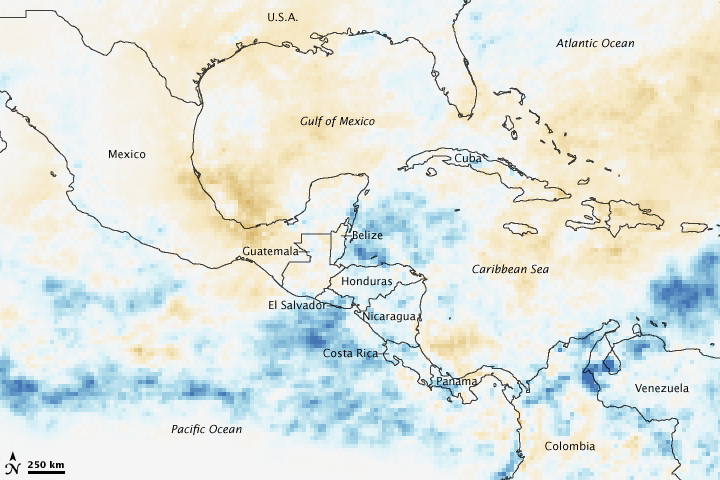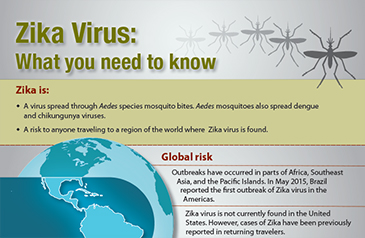Archive for January, 2016
American students, on a humanitarian mission, were heading to the airport in Tegucigalpa, Honduras, on a bus that plummeted into a ravine; 3 students killed, and a dozen injured.
Friday, January 15th, 2016“…Zika virus forces us to confront a potential new disease-emergence phenomenon: pandemic expansion of multiple, heretofore relatively unimportant arboviruses previously restricted to remote ecologic niches…”
Friday, January 15th, 2016Zika Virus in the Americas — Yet Another Arbovirus Threat
January 13, 2016DOI: 10.1056/NEJMp1600297
CDC: Possible association between Zika virus and microcephaly
Friday, January 15th, 2016December 16, 2015
CDC is aware of reports of increased numbers of babies born with microcephaly (smaller than expected head size) in Brazil. The Ministry of Health (MOH) of Brazil is concerned about a possible association between the Zika virus outbreak and increased numbers of babies born with microcephaly.
There are many causes of microcephaly
•There are many causes of microcephaly in babies (e.g., infections a mother can get during pregnancy, genetic abnormalities, exposure to toxic substances during pregnancy). Because of this, it will take time to determine the cause of microcephaly for the cases being reported in Brazil.
Microcephaly in Brazil
•Starting in October 2015, the Brazilian MOH received reports of an increase in the number of babies being born with microcephaly.
•The number of microcephaly cases are roughly 10 times higher than what the country normally sees in a year.
•Some samples from babies with microcephaly have tested positive for Zika virus infection but several affected babies have also tested negative using the same test.
•CDC is not aware of any published reports of increased numbers of microcephaly associated with other similar viral (i.e. flaviviral) diseases transmitted by mosquitoes.
Zika virus in Brazil
•Brazil reported its first case of Zika virus disease in May 2015.
•Since then, the virus has spread and has caused infections in many Brazilian states and other countries in Latin America.
•The association of Zika virus infection and microcephaly is still under investigation.
If you are pregnant and traveling to Brazil or other countries in Latin America:
CDC recommends that all people, especially pregnant women, who are traveling to Brazil and other areas in Latin America, should take precautions to avoid mosquito bites to reduce their risk of infection with Zika virus and other mosquito-borne viruses such as dengue and chikungunya.
Federal health officials are debating whether to warn pregnant women against travel to Brazil and other Latin American and Caribbean countries where mosquitoes are spreading the Zika virus, which has been linked to brain damage in newborn babies.
Thursday, January 14th, 2016Today (1/14/16), WHO declares the end of the most recent outbreak of Ebola virus disease in Liberia and says all known chains of transmission have been stopped in West Africa.
Thursday, January 14th, 2016** This date marks the first time since the start of the epidemic 2 years ago that all 3 of the hardest-hit countries—Guinea, Liberia and Sierra Leone—have reported 0 cases for at least 42 days.
** More flare-ups are expected
** Strong surveillance and response systems will be critical in the months to come.
Turkey: Kurdish militants detonated a car bomb outside a police station, killing six and wounding dozens
Thursday, January 14th, 2016Jakarta, Indonesia: six bomb blasts and up to 14 militant gunmen
Thursday, January 14th, 2016Brazil: 3,530 microcephaly cases possibly linked to maternal Zika virus infections have been reported, an increase of 356 cases from the last report on Jan 5.
Thursday, January 14th, 2016Saudi Arabia’s Ministry of Health reports a new MERS-CoV case, a patient who had contact with camels before he got sick.
Thursday, January 14th, 2016
** Commission on a Global Health Risk Framework for the Future (GHRF): Final Report
Thursday, January 14th, 2016Neglected Dimension of Global Security
Press Release: “…Infectious disease outbreaks that turn into epidemics or pandemics can kill millions of people and cause trillions of dollars of damage to economic activity, says a new report from the international, independent Commission on a Global Health Risk Framework for the Future. Few other risks pose such a threat to human lives, and few other events can damage the economy so much. The Commission estimated the global expected economic loss from potential pandemics could average more than $60 billion per year. Yet, nations devote a fraction of the resources to preparing, preventing, or responding infectious disease crises as they do to strengthening national security or avoiding financial crises.
The Commission recommended an investment of approximately $4.5 billion per year – which equates to 65 cents per person – to enhance prevention, detection, and preparedness.
** The biggest component of this investment is to upgrade public health infrastructure and capabilities for low- and middle-income-countries, which is estimated to cost up to $3.4 billion per year.
** The second biggest component of the $4.5 billion figure is $1 billion per year to fund accelerated research and development in a wide range of medical products.
** The balance relates to financing the strengthening of the World Health Organization’s (WHO) capabilities and funding WHO and World Bank contingency funds….”





